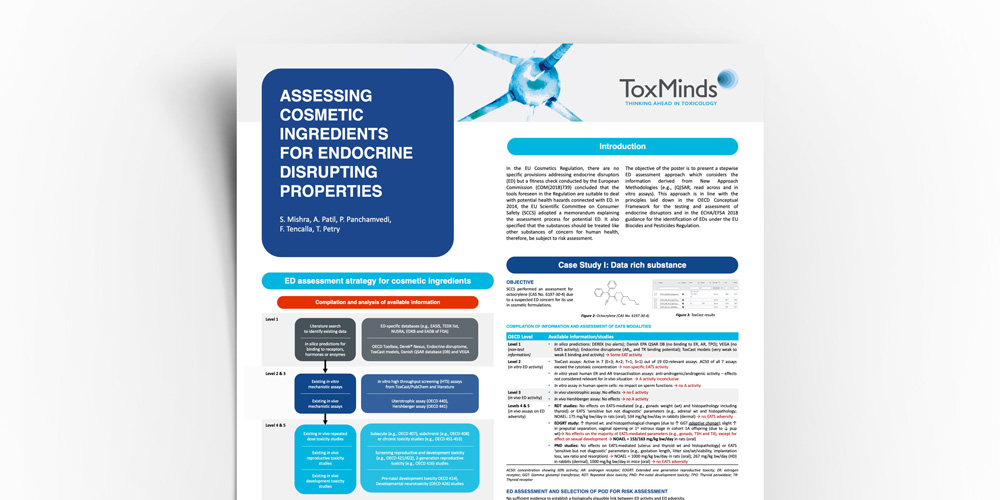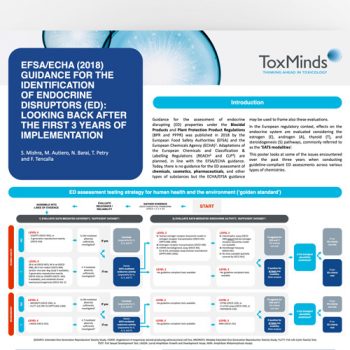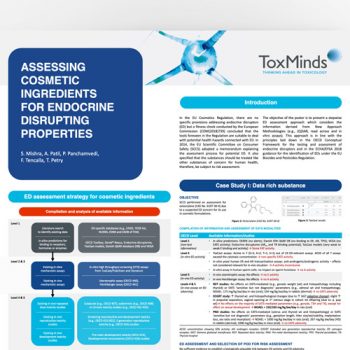Assessing cosmetic ingredients for endocrine disrupting properties

In the EU Cosmetics Regulation, there are no specific provisions addressing endocrine disruptors (ED) but a fitness check conducted by the European Commission (COM(2018)739) concluded that the tools foreseen in the Regulation are suitable to deal with potential health hazards connected with ED. In 2014, the EU Scientific Committee on Consumer Safety (SCCS) adopted a memorandum explaining the assessment process for potential ED. It also specified that the substances should be treated like other substances of concern for human health, therefore, be subject to risk assessment.
The objective of the poster is to present a stepwise ED assessment approach which considers the information derived from New Approach Methodologies (e.g., (Q)SAR, read across and in vitro assays). This approach is in line with the principles laid down in the OECD Conceptual Framework for the testing and assessment of endocrine disruptors and in the ECHA/EFSA 2018 guidance for the identification of EDs under the EU Biocides and Pesticides Regulation.



